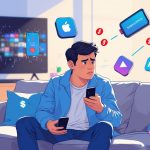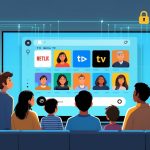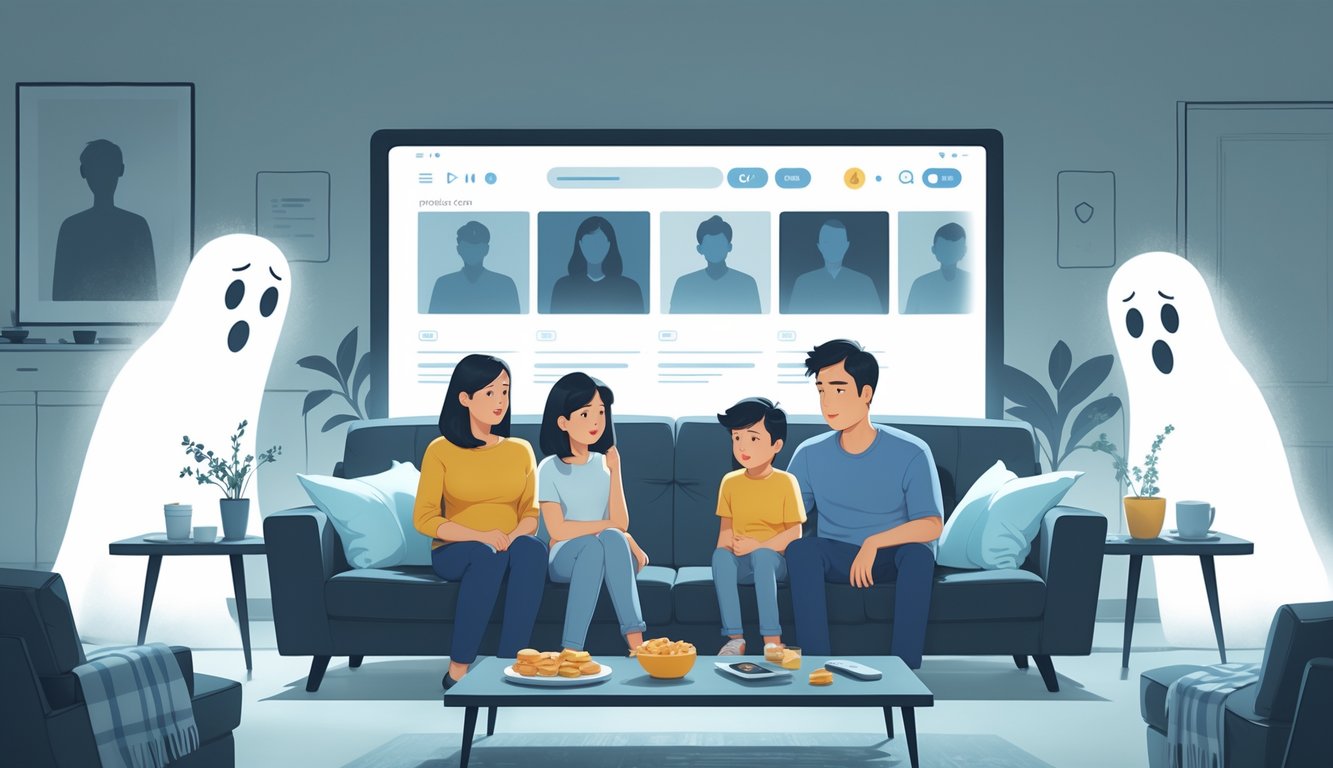
Difficulties Managing Viewing Restrictions
Devices everywhere—TVs, iPads, random old laptops. Keeping restrictions synced? Impossible. Set it up on the living room TV, but then my daughter finds the ancient tablet and all bets are off.
Trying to manage settings means bouncing between apps, dashboards, menus with names like “profile & security.” Each one feels like a prank. Sometimes “Kids Profile” works, sometimes it lets through something questionable because the tags are vague or wrong. I tried reporting a mislabeled cartoon once—the form crashed. Decoding rating symbols? Feels like I need a degree.
Confidence is a trap. The Digital Parents talks about nightmares and mood swings—yep, that’s real. One week it’s harmless slapstick, next week it’s “Why is there blood?” I’d kill for a single control panel or just one clear answer that doesn’t require buying new tech.
Potential for Kids to Bypass Restrictions
Never underestimate a bored kid with YouTube and a vague memory of your password. They’ll Google hacks, click “Forgot PIN,” or just use voice search and bypass everything. My password’s still on a sticky note by the router—security theater, really.
I caught my son using the TV’s voice search to open YouTube, which just nuked every control I’d set up. Kids swap tips at school, find loopholes, and streaming platforms keep missing the boat. Supposedly, some claim “robust” protections, but browsers and off-brand remotes don’t care about your family settings.
ISPCC says there’s good and bad online, but the boundaries always have holes. I’m usually scrambling to patch settings after my kid finds a workaround, and he’s proud of it. Meanwhile, updates break things before you can fix them.
Privacy Concerns Within Family Accounts
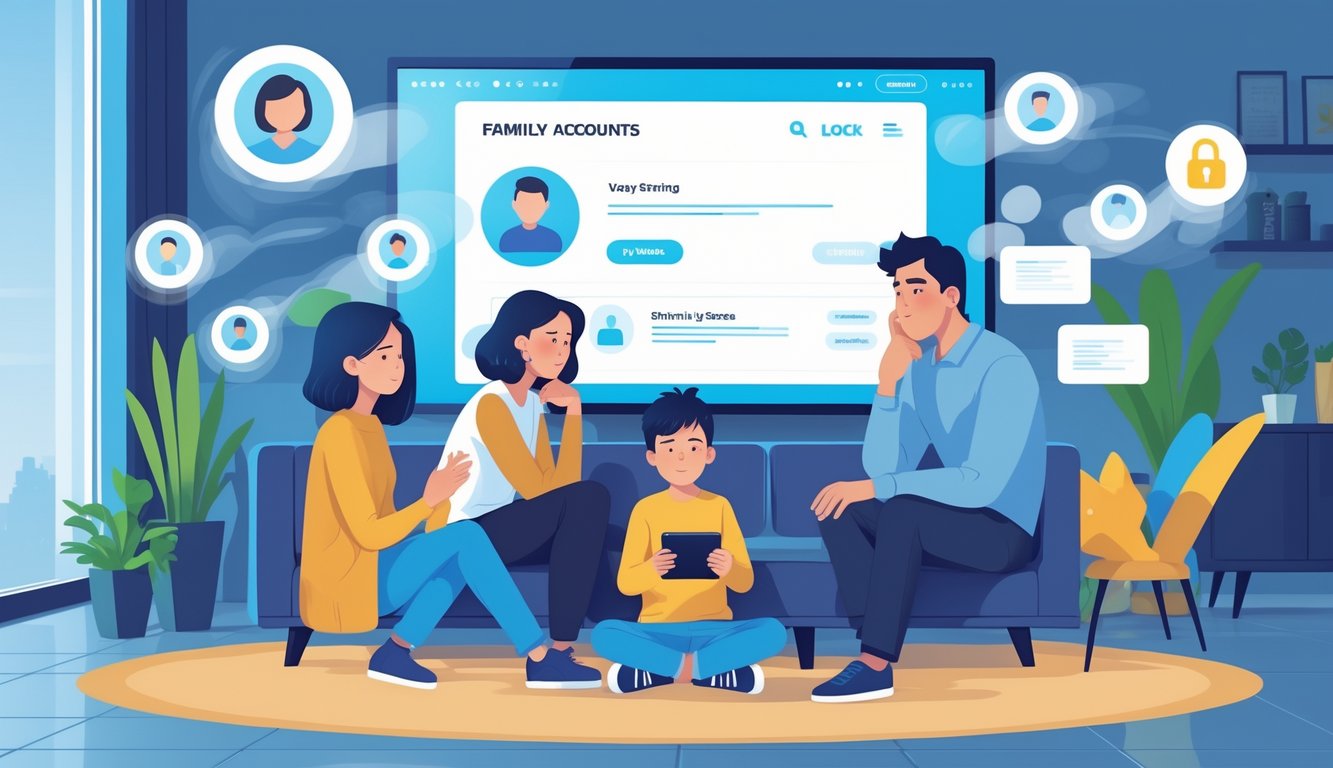
Here’s a fun one: my horror movie marathon ends up in my grandma’s recommendations. Shared accounts mean everyone’s privacy gets trampled, and no one’s happy.
Shared Viewing Histories and Recommendations
I forget what I watched last week, but suddenly the whole house gets the full list—half-finished documentaries, trashy reality shows, medical dramas I’ll never admit to. Netflix, Prime, Disney+—they all say “personalized,” but the algorithm spills your secrets everywhere. “Profiles keep things separate,” sure, unless you count the settings that collapse privacy between accounts. Sometimes the system just dumps my search history into the kids’ queue. Five minutes looking up sci-fi, and now it’s robot cartoons for a month.
The fine print? Streaming services collect everything. They say it’s anonymous, but then your data shows up in everyone’s suggestions. If I made a table, it’d just say “Annoyed” and “Embarrassed.”
Consent and Individual Privacy
Try explaining to a cousin why your anime binge hijacked her recommendations. I gave up. There’s no real consent—just overlapping profiles, forgotten logouts, and one person’s taste infecting everyone else’s. EU data rules? Technically exist. In reality, most platforms just assume “family” means “share everything.”
My friend’s right: once someone has the password, privacy is a myth. Sharing access with family means your stuff is up for grabs. I never agreed to make my viewing habits a group project. The lines blur—gran’s mystery shows, my Marvel queue, everyone just shrugs and moves on.
Emotional and Social Downsides
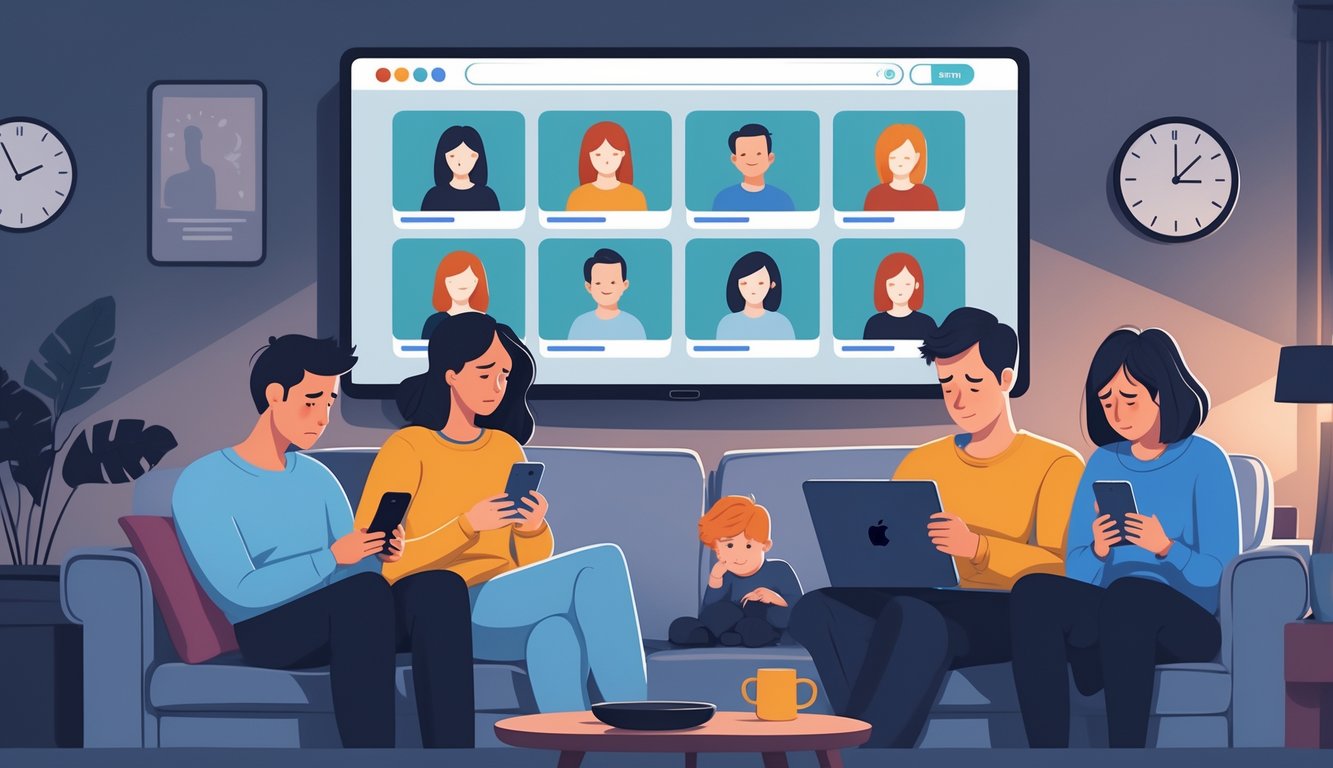
Honestly, these streaming family profiles—Disney+, Netflix, whatever—look like a fix for the endless “what do we watch” fights, but, I don’t know, the vibe gets weird fast. “Personalized experience,” sure, but nobody mentions how it slices up family time into a bunch of little silos. I keep wondering if we’re just pretending it’s fine.
Feelings of Isolation
Somebody’s always off in their own corner, aren’t they? Profiles sound nice until you walk into the living room and everyone’s eyes are glued to their own screens, headphones in, not a word. My kid’s cackling at something upstairs, I’m scrolling through the same tired memes, and nobody’s talking about what we’re watching. Is this what “together” means now? I mean, Pew said only 26% of families felt streaming actually gave them more time together. Twenty-six! The rest of us are just… what, eating dinner together while texting other people? I tried a movie night—got three “already seen it” excuses and then I got distracted by a Slack ping. So much for the magical family bonding.
Impact on Family Dynamics
It’s not just about what we watch—these algorithms dig in and widen every tiny difference. Suddenly, compromise is dead. My husband wants Marvel again, I’m annoyed because my homepage doesn’t even show it. “Not on my list,” I say, like I’m some kind of menu snob. I don’t know, maybe I am. And the more time we spend on our own profiles, the less we talk. My kid started referencing some YouTube joke at dinner and I had no idea what he meant. It’s like we’re syncing to different clocks. Digital parenting sites keep warning about this: “quality time” shrinks, little resentments pile up, and suddenly we’re all just ghosts in the same house. Is that dramatic? Maybe, but it feels true.
Potential for Depression
Nobody tells you depression can look like midnight binging with the door closed. I’ve missed the signs—haven’t we all? You end up using the show as background noise, not even caring about the plot. APA’s 2022 study said teens glued to solo streaming for three hours or more were way more likely to feel sad and unmotivated. Not social media, but, come on, what’s the difference if it’s just more screen time? Dr. Amy Taylor (she’s a therapist I called once about this stuff) said she’s seeing more emotional withdrawal, and yeah, it lines up. Streaming profiles make self-isolation so easy to miss, even for parents. Depression doesn’t need a big “moment”—sometimes it’s just hours of fake laughter behind a closed door. Is there an algorithm to detect that? Doubt it.


